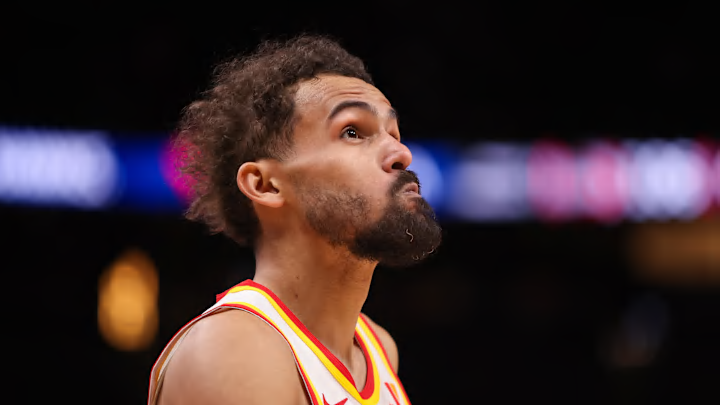Trae Young’s contract extension represents more than just a contract dispute - it represents an inflection point for star players and the contracts they receive. Since the salary cap explosion following the 2016 TV deal, players of Young’s caliber have been given max extensions without second thought. You still see this practice employed by many teams across the league, most recently by the Spurs in the De’Aaron Fox extension this summer.
The recent CBA, however, levies extreme penalties on teams with such reckless spending habits. The Atlanta Hawks find themselves with a roster that could become quite expensive if they choose to re-sign Dyson Daniels, Kristaps Porzingis, and Trae Young. The Hawks could spend over $205 million on the three aforementioned players, Jalen Johnson, Zaccharie Risacher, Onyeka Okongwu, and Nickeil Alexander-Walker.
In a modern NBA where quality depth has proven more valuable than sheer star talent, having just seven players accounting for this high a share of the team’s salary is a recipe for disaster. The first apron for the 2026-27 season is set at $210 million, just $5 million less than what Atlanta’s top seven players would earn. This means Atlanta would be hard capped for the foreseeable future if they decide to give Young a max, which would severely limit the team
Front offices are monitoring how Atlanta and Young play this situation
Teams across the league will soon face this dilemma. Young is a rare talent whose production cannot be easily replaced through trade, free agency, or the draft. However, he has not confidently proven he is worth an extension with an average annual value of nearly 60 million.
It is hard to imagine the Hawks will let Young leave the team, as they have almost no leverage in trade talks at this point. De’Aaron Fox was again a prime example of how an expiring deal can sap a high-level player's trade value. If Atlanta allows Young to leave, it will create a hole in the roster that cannot be filled.
How Atlanta should handle this dilemma is an excellent question. If push comes to shove, they should offer the max to avoid losing him for nothing. But Young doesn’t exactly have the leverage to force this scenario either, as no other team can offer the same four-year, $229 million deal that the Hawks can.
A logical middle ground would be to agree to the maximum contract that other teams could in free agency, which projects to be a four-year, $213 million contract. This contract has an average annual value of just over $53 million, however, just $4 million less than the max deal Atlanta could offer.
This is not a substantial decrease from the max, however. This leaves just one framework that will satisfy all parties: a short-term compromise. An example Keith Smith of Spotrac pitched was a three-year, $160 million extension with a player option for the third season. If the team decides Young does not deserve to be the franchise player, they can easily get out of this short-term (but not expiring) contract via trade or simply waiting.
Three-year deals are not common for stars entering their prime, but this is an unusual situation the NBA has not faced in recent memory. Whatever the outcome of this saga is, expect future extensions to follow the trail blazed by Young and the Hawks.
